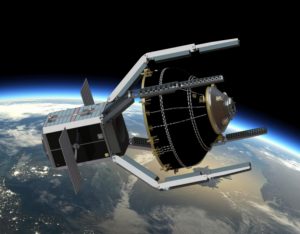
The agency has begun soliciting ideas for In-Orbit Servicing activities from European industry and academia.
A first stage ‘request for information’ has been posted on ESA’s Open Space Innovation Platform. Respondents are invited to propose both a servicer spacecraft concept and identify a customer to be serviced, with the aim of putting the concept forward for ESA’s next Ministerial Council in 2022.
The ESA’s Director General, Josef Aschbacher, stresses “the need to address the management of assets in space with a sustainability mind-set – financial and environmental.”
“The development of such a market for in-orbit activities – servicing, rendezvous, assembly, refurbish, manufacturing, and recycling – is both expected and desirable, including economically for operators to receive profitable returns on their initial investment.”
“Looking forward, the aim for ESA is to contribute to creating and capturing new demand in Europe by fostering the service-offering side and to stimulate and enable the demand side of a developing market in the wider context of commercial In-Orbit Servicing (IOS). This new initiative and the request for information are part of that effort.”
The move addresses one of the main design constraints of space missions – once they reach orbit they cannot be fixed. In-Orbit Servicing could see spacecraft be able to perform repairs, add capabilities, refuel or even recycle parts of the satellites they service, hopes ESA.
Refuelling, recycling
Specifically, the In-Orbit Servicing Capabilities are defined as:
- Cooperative Attitude and Orbit Control System (AOCS) takeover: Lifetime extension for a Customer Spacecraft by providing the propulsion/actuation capabilities required.
- Assembly: Assemble, manipulate and/or disassemble (take apart) Spacecraft parts from or into a satellite/vehicle
- Refurbishment: Rehabilitation or servicing of a Spacecraft by replacing current aged or non-functional parts by new equivalent ones.
- Manufacturing: Manufacturing of Spacecraft parts in-orbit starting from raw material and/or basic components coming from Earth and/or from in-orbit recycling
- Refuelling: Re-supply of propellant to a Spacecraft already in space.
- Recycling: Capacity to process materials/parts already in space, from old Spacecraft or space debris, into usable raw material for the manufacturing of new equipment/parts.
You can find more information, including how to submit a service concept, on the OSIP website.
ClearSpace-1
ESA highlights that it has invested around €50 million in the development of technologies and business cases assessments for In-Orbit Servicing.
It has also committed to a €100 million contract for the removal of a relic of an ESA mission from orbit. Guidance, navigation and control – plus rendezvous and capture – technologies for this ClearSpace-1 mission, planned for launch in 2025, are being developed through ESA’s Active Debris Removal/ In-Orbit Servicing project, ADRIOS, and will also be applicable to In-Orbit Servicing.
The first commercial In-Orbit Servicing mission took place last year – Northrop Grumman’s Mission Extension Vehicle latched onto Intelsat 901 in geostationary orbit, to take over propulsion duties.
Thales Alenia Space and Astroscale are among the companies investing in the satellite servicing and life extension market.
Another project, led by Rocket Engineering in London, will create a compact propulsion system the size of a house brick for use in nano and small satellites. The engines use electromagnets to enable the satellites to move for in-orbit spacecraft servicing or space debris mitigation.